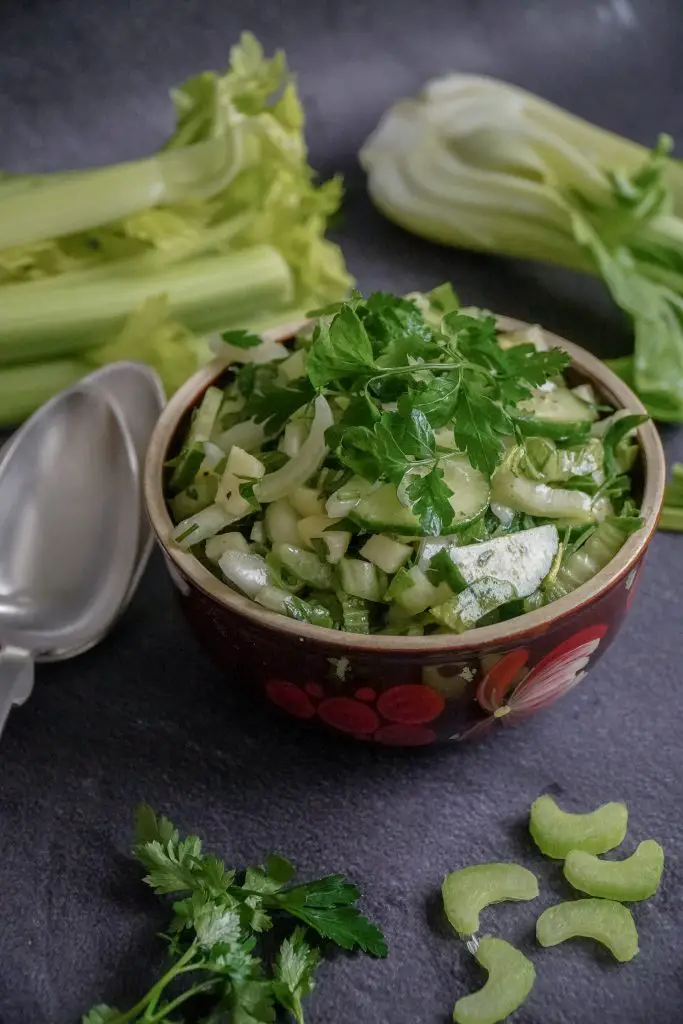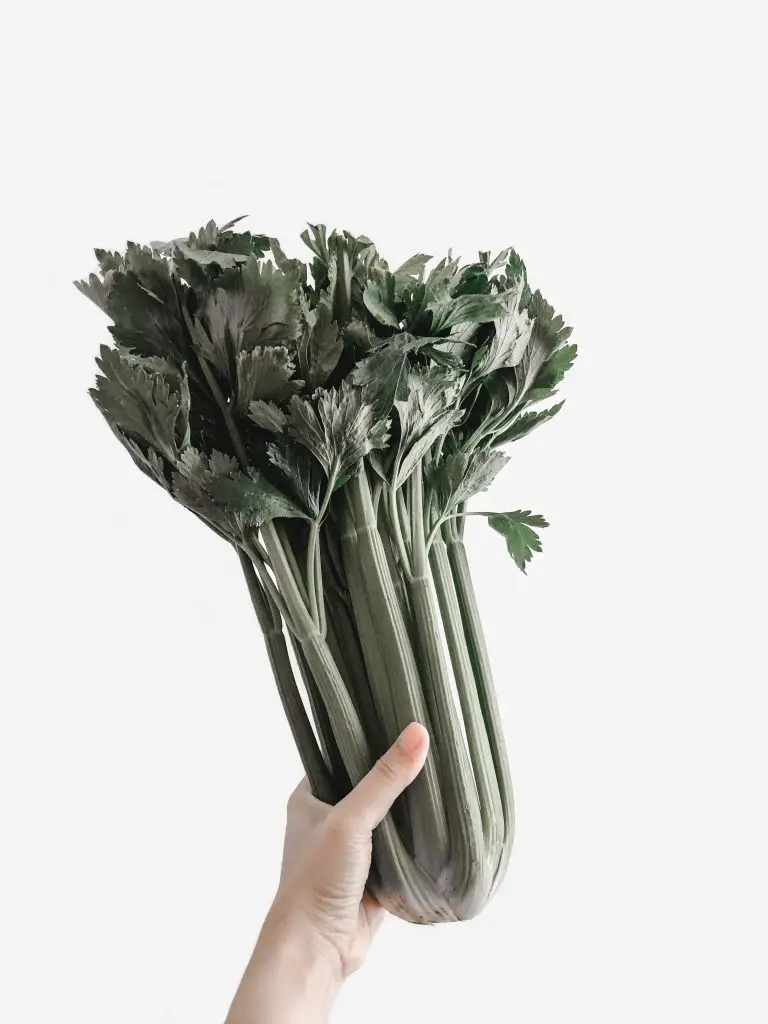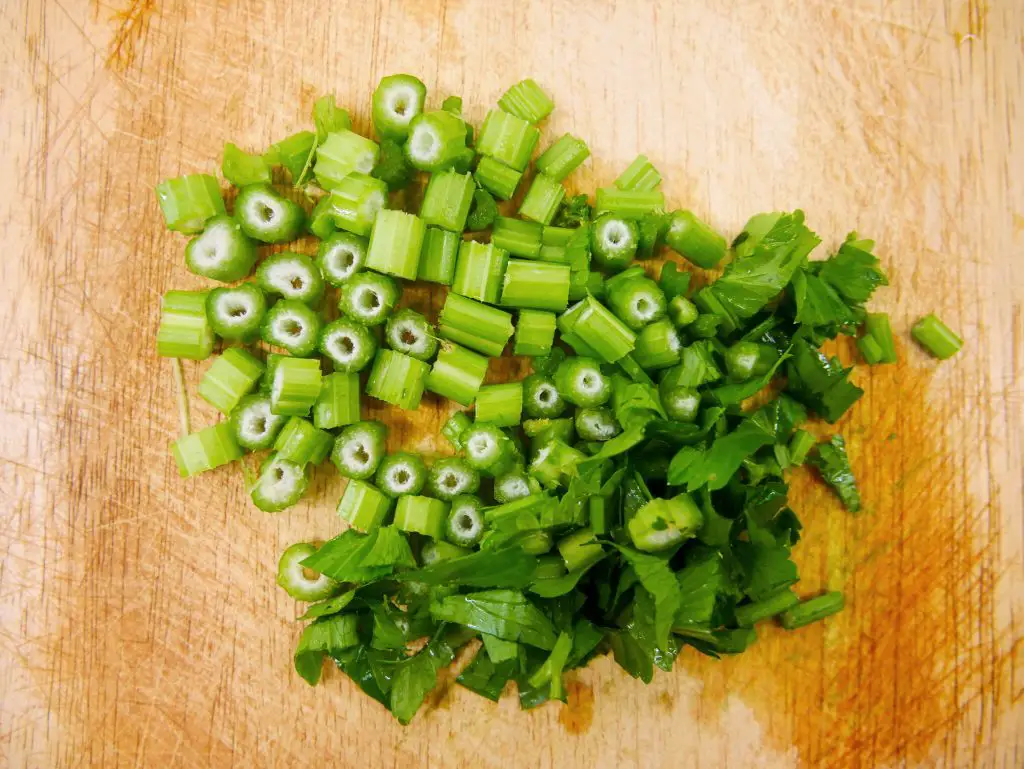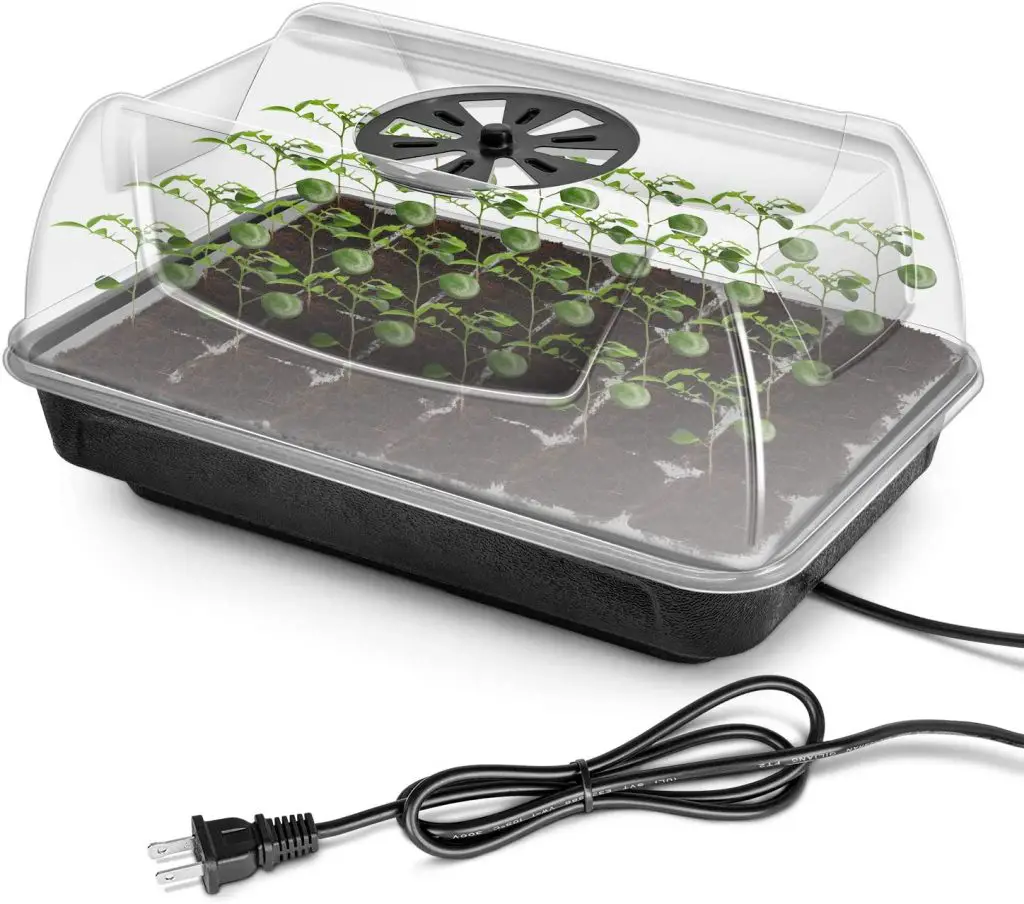How Long Does It Take For Celery Seeds To Germinate? How Does Temperature Effect It? Celery is one of the more challenging vegetables to grow at home in a garden as it is quite fussy about the conditions in which grows, however, one of the most common questions that is asked is how long does it take for celery seeds to germinate?
Celery seeds take around 7 to 12 days to germinate between the temperatures of 59 to 68°F (15 to 20°C) according to a study published by the University of California. However, if the temperature falls below 41°F (5°F) or rises above 77°F (25°C) the seeds will not germinate which shows have just how fussy this plant really is. To see the details of the days to germinate at different temperatures see the table below.
| Days To Germinate | Temperature (°F) | Temperature (°C) |
| – | 32 | 0 |
| 41.0 | 41 | 5 |
| 16.0 | 50 | 10 |
| 12.0 | 59 | 15 |
| 7.0 | 68 | 20 |
| – | 77 | 25 |
| – | 86 | 30 |
| – | 95 | 35 |
| – | 104 | 40 |
As mentioned above what makes celery a particularly challenging vegetable to grow in many regions is it is not tolerant of either very cold or very hot conditions but at the same time has a relatively long growing time. This means that the timing of growing celery is actually quite critical and difficult to get right.
Celery typically takes between 130 to 140 days to mature which means in most locations that you absolutely have to start the seeds off in winter to ensure that the crop is ready to harvest before the heat of Summer kicks in.

How To Grow Celery
To grow celery successfully it is necessary to plant the seeds approximately 10 to 12 weeks prior to the last frost of the season which is much earlier than any other summer crop because of the slow growth rate.
To start the seeds off fill a seed tray with good quality seed raising mix and firm it down into the individual cells to create solid plugs as this will make it easier to transplant it later on.
Plant 2 to 3 seeds per cell at a depth of approximately a quarter of an inch and then water the seeds in well. The reason for planting 2 to 3 seeds is to ensure that you get at least one seed germinating per cell so if all three seedlings come up then thin to the strongest seedling.
To ensure that the growth occurs at a reasonable rate it is important to ensure that the seed trays are placed in a relatively warm area of your house or ideally, it is best to use a heated seed tray.

The advantage of using a heated seed tray is that it provides a much more consistent temperature and humidity for the seedlings to grow in than leaving it around your house as the temperatures can fluctuate significantly between the day and night.
If you are considering purchasing a unit we would highly recommend that you select one that has a removable seed tray and humidity dome. The removal seed tray is important because it is usually the component of the unit that will deteriorate first and therefore being able to replace it will extend the life of the unit significantly.
The second key feature to look for is the humidity dome because that helps to maintain a constant temperature and humidity around the seedlings ensuring that they have the ideal conditions in which to grow. To see the latest price on Amazon for a unit like this click on the link below.
Once the seeds are planted they will need to spend approximately 10 to 12 weeks in the seed tray before they can be transplanted into the garden at which point seedlings will still be quite small, only a couple of inches tall.
Transplanting Celery Seedlings Into The Garden
As mentioned earlier in the article celery is one of those crops that is extremely fussy about the conditions in which it grows, it will not tolerate temperatures below 41 to 50°F (5 to 10°C) or temperatures above 68 to 77°F (20 to 25°C) which means for many areas timing of when you plant the seeds out in the garden is absolutely critical.
To help control the temperatures and bring it up a little bit in the early part of the season it is highly recommended that you use either a cloche or a row cover. Cloches can be made easily by using an old milk carton and cutting the base off and removing the lid. These will help to keep the plants warm, however, one of the downsides of using cloches is that they have a relatively small volume which means the temperature can rise relatively quickly within them.
As such we generally recommend that you use row covers as they are relatively large compared to the cloches and therefore have less temperature fluctuation during the day.

When planning the seedlings they should ideally be placed in a location that gets at least 6 to 8 hours sun per day however these plans will tolerate shady conditions but they will slow down the growth rate which in many cases is enough to reduce the quality of the crop so is generally not recommended.
In terms of soil conditions, celery, like most vegetables, prefers a rich moist, and free-draining soil that is slightly acidic and contains plenty of nutrients. If you are unsure about the quality of your soil it is advisable to add a bag of compost before placing them into the soil. The seedlings should ideally be placed approximately 10 inches apart.
It is also important to ensure that a layer of mulch, approximately 2 to 4 inches thick, is applied around the base of the plants. This is particularly important for celery as it requires constant moisture to produce a high-quality crop. If the plant does not have enough moisture it will become very stringy and inedible quite quickly.
Harvesting Celery
Once the celery gets to a reasonable size and is approaching the point where it is ready to harvest it needs to be blanched 2 to 3 weeks prior to picking as this will make the flavor milder and generally more pleasant.
Blanching can be done by earthing up the soil around the stalks or alternatively many people simply tie newspapers around the stalks or place cartons over-the-top of the plant to protect the stalks. When blanching it is still important to leave the top of the plant exposed to light so that it can continue to photosynthesize.
Once the plant is ready to harvest you can either take individual stalks or the whole thing depending upon your needs, however, unfortunately like most things with celery, the harvest period is not ideal. It does not last very long and the celery stalks will deteriorate quickly so you do need to pick most of them when they are ready.
I hope you found this article useful and have great success growing your celery at home if you have any additional comments or questions please leave in the section below.
Relevant Articles
Is Parsley And Celery The Same?
How Long Does It Take For Onion Seeds To Germinate? How Does Temperature Affect It?
How Long Does It Take Lettuce Seeds To Germinate? How Does Temperature Effect It?

